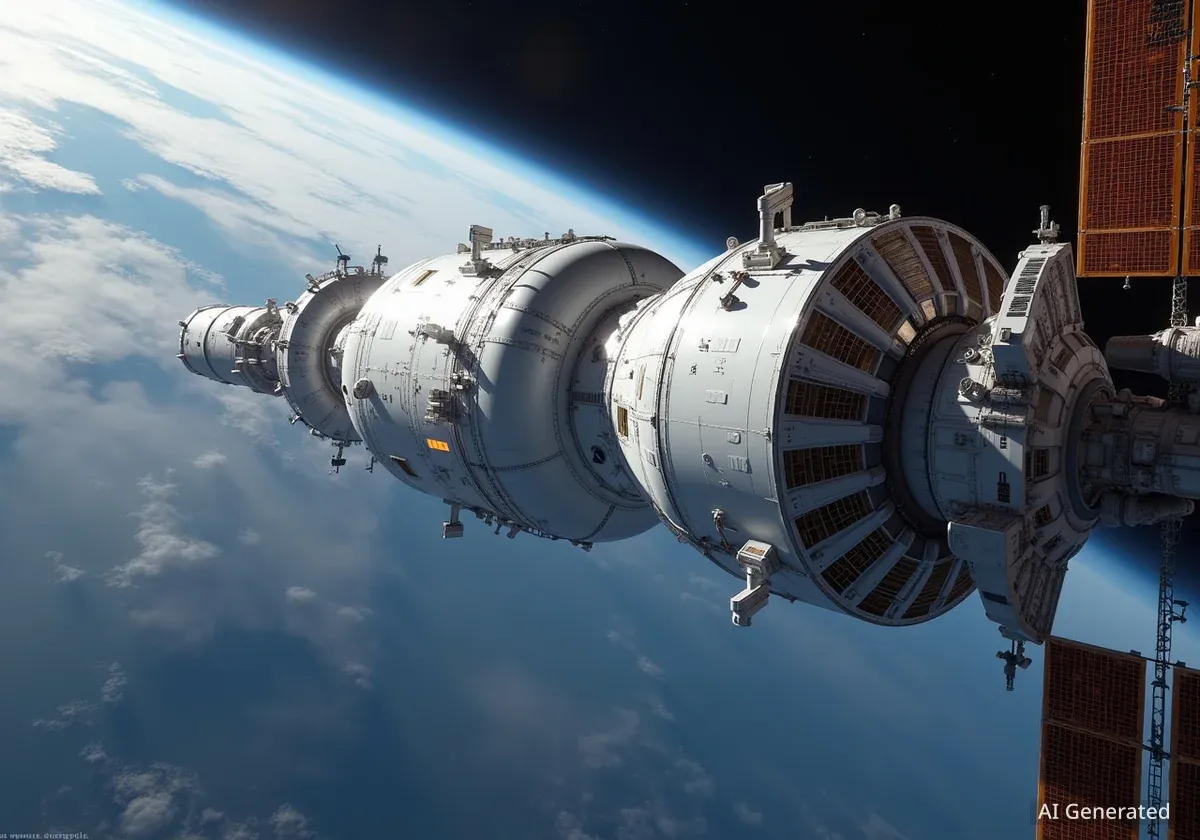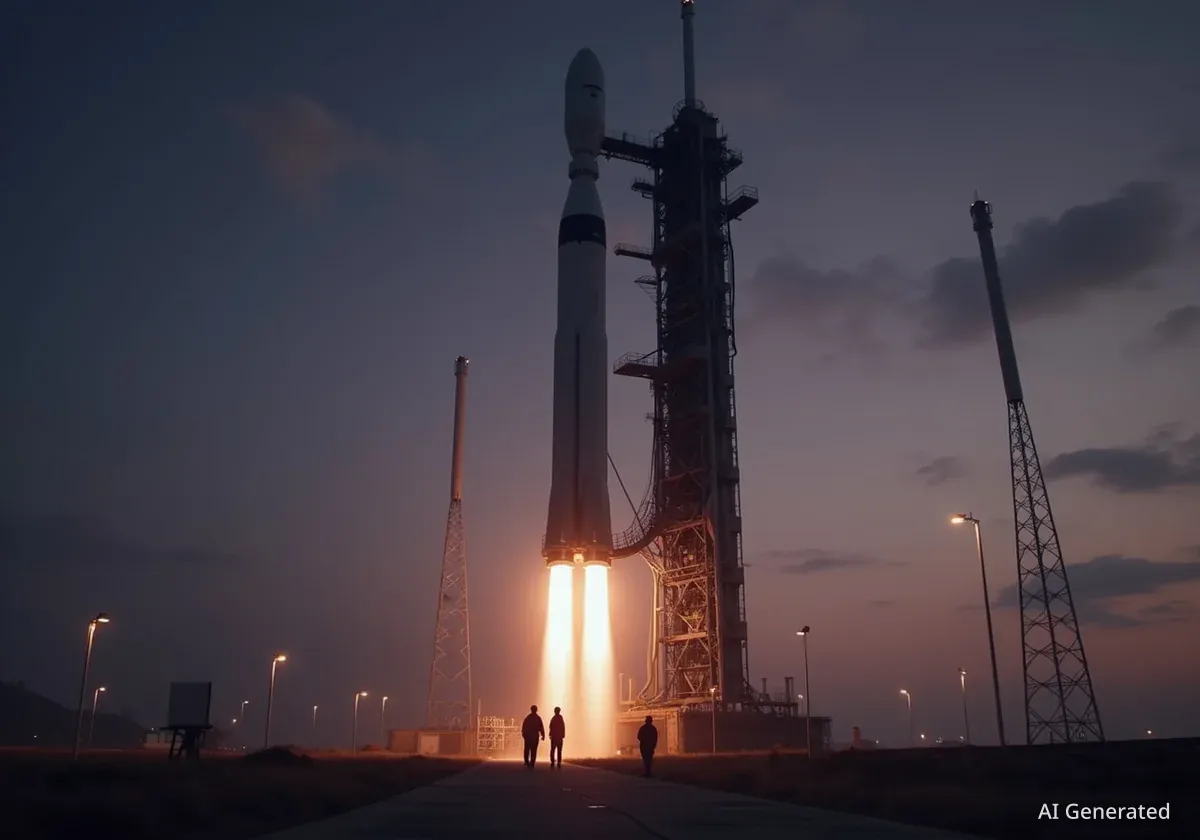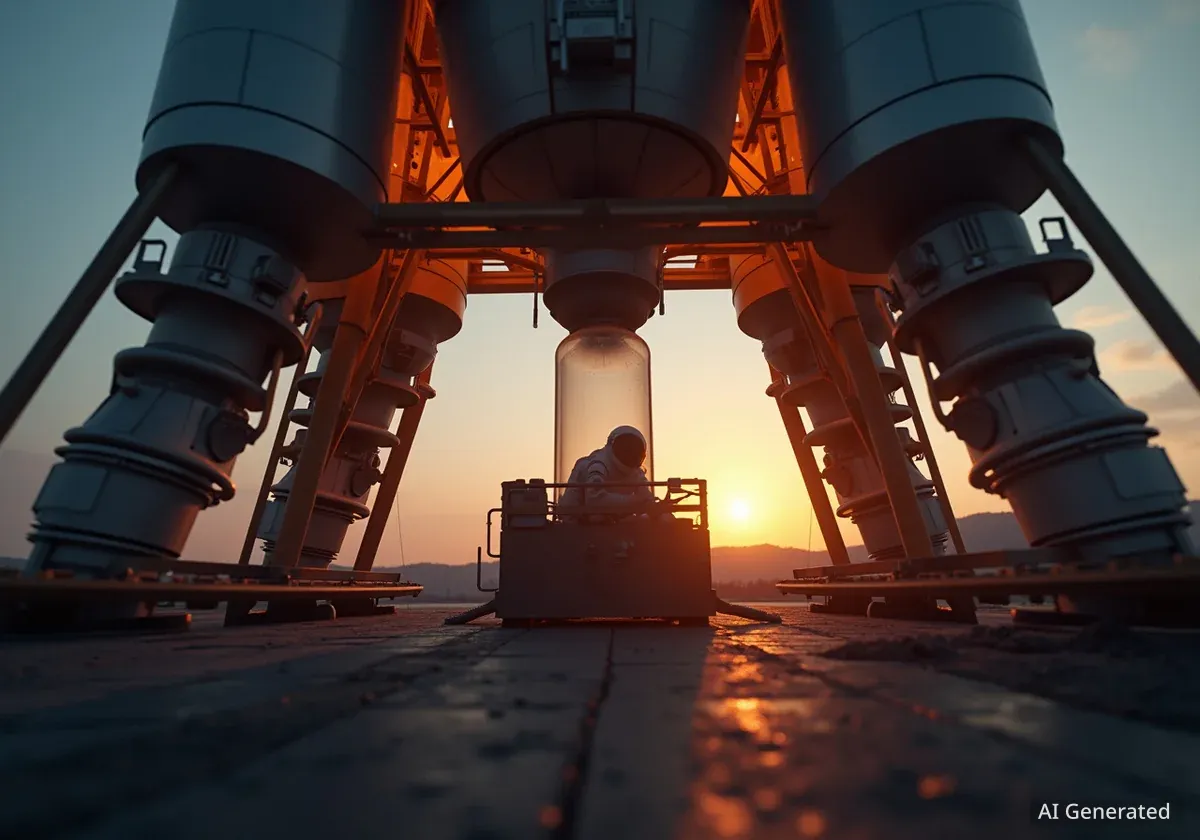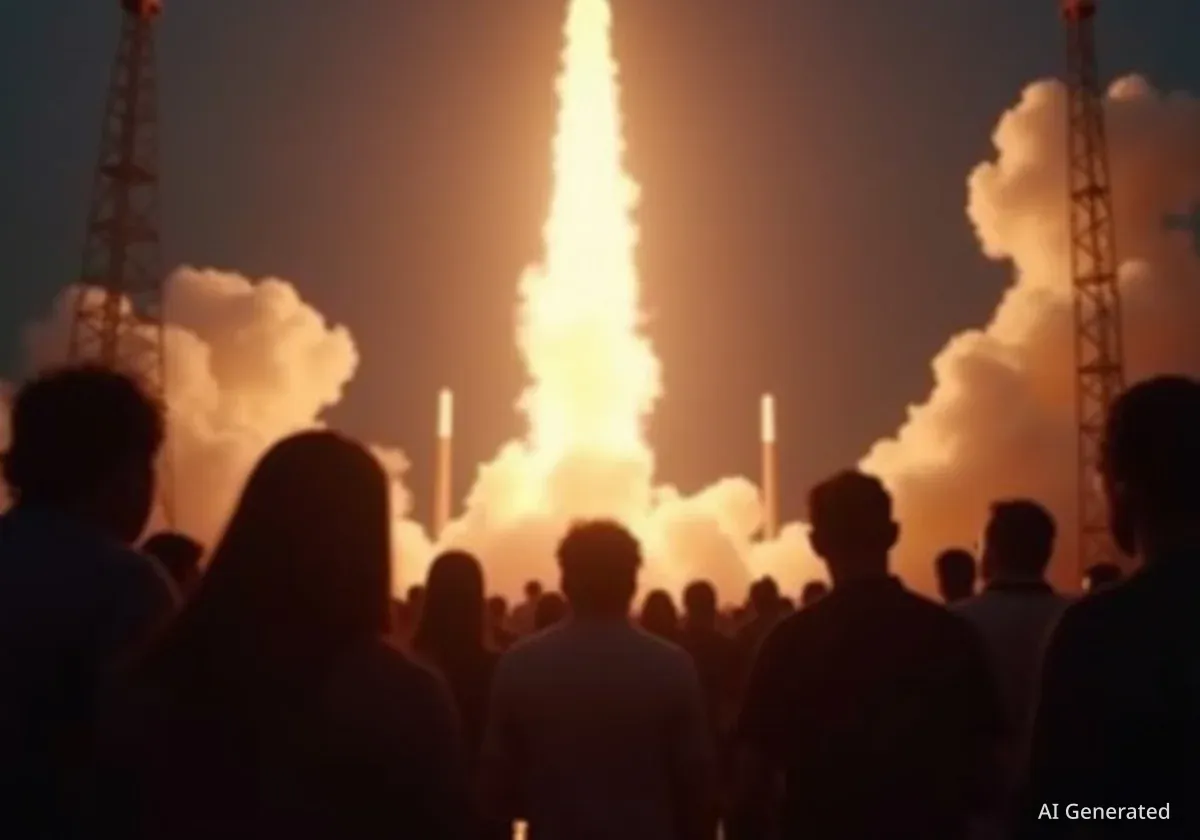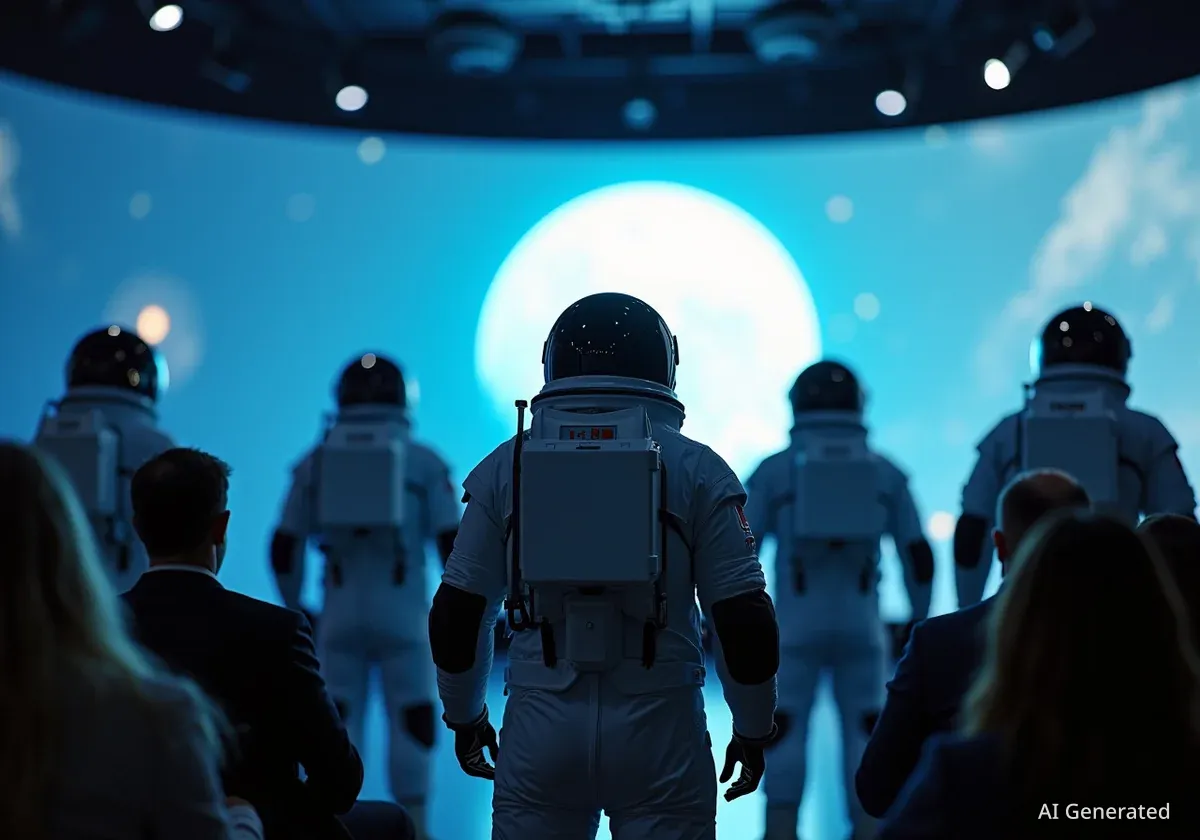Northrop Grumman's newly upgraded and significantly larger Cygnus cargo spacecraft has successfully reached the International Space Station (ISS). The vehicle, designated NG-23, completed its rendezvous and was captured by the station's robotic arm on the morning of September 18, delivering nearly 11,000 pounds of supplies and scientific experiments.
The arrival marks the successful debut of the Cygnus XL model, which boasts a considerably larger cargo capacity than its predecessors. The mission overcame a minor thruster issue that caused a one-day delay in its arrival at the orbiting laboratory.
Key Takeaways
- Northrop Grumman's first Cygnus XL spacecraft successfully docked with the ISS on its debut mission, NG-23.
- The vehicle delivered approximately 11,000 pounds (4,990 kg) of cargo, a significant increase from the 8,500 pounds of previous models.
- Arrival was delayed by one day due to a thruster issue that required mission controllers to recalculate the spacecraft's trajectory.
- The spacecraft is named the S.S. William "Willie" McCool, honoring an astronaut from the 2003 Space Shuttle Columbia accident.
Details of the Rendezvous and Capture
The critical phase of the mission occurred high above the Earth. At 7:24 a.m. EDT, NASA astronaut Jonny Kim skillfully operated the station's Canadarm2 robotic arm to grapple the free-flying Cygnus spacecraft. At the moment of capture, the ISS was orbiting approximately 260 miles (420 kilometers) over the Democratic Republic of Congo.
Following the successful capture, ground controllers took over to maneuver the spacecraft. The S.S. William "Willie" McCool was officially berthed to the Earth-facing port on the station's Unity module at 10:10 a.m. EDT. It is scheduled to remain attached to the station until March 2026.
Overcoming a Technical Hurdle
The mission was initially scheduled to arrive on September 17, but a problem with one of the spacecraft's thrusters altered its course. According to NASA officials, several planned engine burns were cut short, which threw the vehicle off its carefully planned trajectory. This required the flight control team to spend time replanning the approach to ensure a safe rendezvous. Bill Spetch, NASA's ISS operations integration manager, described the process as a "very intricate planning exercise."
A New Generation of Cargo Delivery
The NG-23 mission is a landmark for Northrop Grumman's commercial resupply services. It introduces the Cygnus XL, a stretched version of the reliable cargo freighter designed to carry more mass and volume to the space station on a single flight.
By the Numbers: Cygnus XL Capacity
The new Cygnus XL model can transport around 11,000 pounds (4,990 kg) of cargo. This is a substantial increase of nearly 30% compared to the roughly 8,500 pounds (3,855 kg) carried by earlier Cygnus versions.
This mission also marks the return of Cygnus flights after a significant hiatus. The last successful delivery, NG-21, was in August 2024, over a year ago. A subsequent mission, NG-22, faced multiple setbacks, including avionics issues that pushed its launch from January to June, before being canceled entirely after the spacecraft was damaged during ground transport.
A Tribute to a Space Hero
Northrop Grumman continues its tradition of naming each Cygnus spacecraft in honor of an individual who has made a significant contribution to human spaceflight. This vehicle, the S.S. William "Willie" McCool, pays tribute to the pilot of the Space Shuttle Columbia mission STS-107.
McCool and his six crewmates were lost when the shuttle broke apart during reentry on February 1, 2003. Upon the spacecraft's safe arrival, astronaut Jonny Kim paid his respects to the fallen hero.
"His life continues to inspire us," Kim said after the capture. "To see a ship bearing his name safely arrive at the station is a reminder that his courage and kindness are still circling our beautiful planet Earth."
Science and Supplies for the Station Crew
The thousands of pounds of cargo aboard the NG-23 mission support dozens of scientific investigations and provide essential supplies for the crew. According to NASA, the manifest includes a diverse range of research materials.
Highlights of the Cargo Manifest:
- Semiconductor Research: Materials for experiments aimed at producing high-quality semiconductor crystals in microgravity, which could lead to better electronics on Earth.
- Cryogenic Fuel Technology: Equipment to test and develop improvements for cryogenic fuel tanks, which are critical for future deep-space missions.
- Water System Hygiene: A specialized UV light system designed to prevent the formation of microbial communities in the station's water systems.
- Pharmaceutical Development: Supplies to produce pharmaceutical crystals in space, with potential applications for treating cancer and other diseases.
After the crew unloads its contents over the coming months, the Cygnus will be loaded with trash and disposable equipment. In March 2026, it will be unberthed from the station to perform a controlled, destructive reentry into Earth's atmosphere over the Pacific Ocean.

